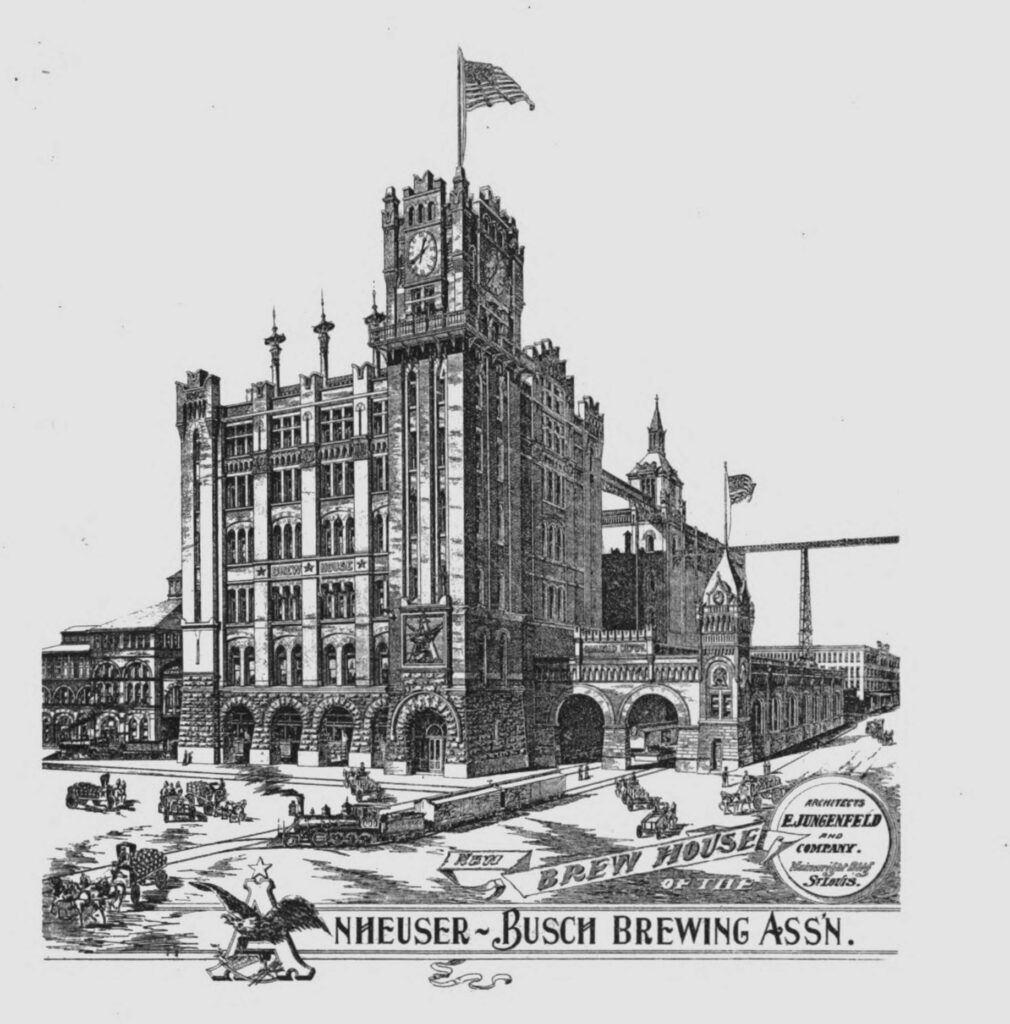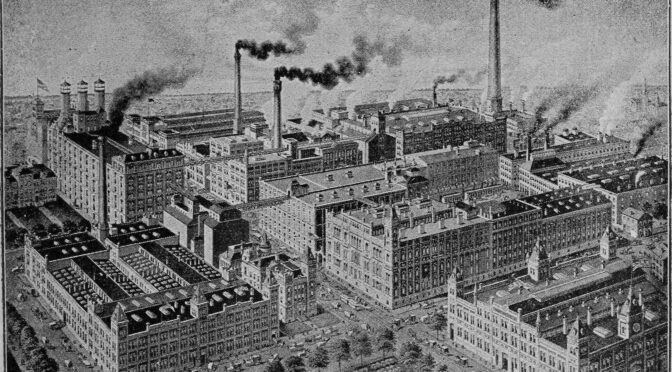In 1893, Austrian brewing scientist Franz Schwackhöfer visited the World’s Columbian Exposition in Chicago, recorded everything related to brewing, and subsequently published a book about it in 1894 titled “Amerikanische Brau-Industrie auf der Weltausstellung in Chicago” (lit. “American brewing industry at the World Exhibition in Chicago”).
It contains a lot of details about American brewing, but what caught my eye are the descriptions of five different mashing methods that were used in the US and were personally witnessed and recorded by Franz Schwackhöfer himself. In this article, I want to describe and dissect one of them (pp.33-34).
Basic Numbers
The recipe is to brew 130 barrels of wort with an OG of 13.1°Balling. The grist consists of 4,300 lb malt and 2,300 lb of unmalted grains (the recipe just mentions grits, but in the parts of the book, grits specifically from white Flint corn are mentioned).
Cereal Mash
800 lb of crushed malt are mash in with 35 barrels of water at a temperature of 25°C, then heated up to 50°C. 2,300 lb of grits are then added and the mash is heated up to 66°C. After a rest of 15 minutes, the mash is heated up to 75°C over the course of 20 minutes. It is then diluted with 6 barrels of thin mash from the main mash (this is meant to help saccharify more of the starches and make the mash more liquid), and then brought to a boil. The whole mash is boiled for 60 minutes under constant stirring.
Mashing, Lautering, Sparging
3,500 lb of crushed malt are mashed in with 27 barrels of water of 37.5°C and stirred for 40 minutes. Then over the course of 15 minutes, the cereal mash is slowly mixed in. This should increase the mash temperature to about 67.5 to 68.75°C, at which temperature it is rested for 30 minutes. To get to the final temperature of about 73°C, 23 barrels of boiling water are underlet (through a Pfaff) and mixed in. Stirring then stops and the mash is rested for 90 minutes, that’s when lautering begins.
The specific gravity of the first runnings is 19.2°Balling. Sparging happens in four different steps, first with 10 barrels, then 35 barrels, then 25 and finally 24 barrels to hot water of about 77 to 81°C. The specific gravity of the final runnings should be 2.5°Balling.
Boiling the Wort
When 25 barrels of wort have been collected in the kettle, heating begins. At 70 barrels, the wort should start boiling and 15 lb of hops are added. When the kettle is full, the boil of 2 hours begins. 30 minutes before the end of the boil, 35 lb of hops are added, and at 10 minutes before the end of the boil, another 55 lb of hops are added. The total hop addition is 105 lb per 130 barrels of wort, which is equivalent to 3.15 grams per liter. For the final hop addition, more high quality hops are used. Together with the final hop addition, 4 lb of Icelandic moss is added to help with precipitation of proteins (I think this should actually be Irish moss as this is frequently used for exactly that in brewing).
125 barrels of wort end up in the hop jack, where it is left to sit for 40 minutes so that the hops can settle out. The hop remains are then sparged with 5 barrels of boiling water.
Allegedly, some breweries add fir pitch to the kettle at a rate of 3-4 lb per 100 barrels of wort to impart a pitch flavour to the beer, as the lagering vessels are not pitched but only lacquered.
At Home-Brew Scale
If you want to rebrew this at home-brew scale to produce about 20 liters of beer, do the cereal mash with 650g of crushed malt, 1850g of grits and 5.9 liters of water. For the main mash, use 2850g of crushed malt and 4.6 liters of water to mash in. For the final temperature step, use 3.9 liters of boiling water. Sparge with a total of 16 liters of water, though you may require a bit more sparge water, so prepare more.
The hop additions should be 10g hops at 120 minutes, 23g at 30 minutes, and 37g hosp together with 2.5g of Irish moss at 10 minutes. Assuming Cluster hops at 7% alpha acid, this should end up with a nice 32 IBU (calculated) of bitterness. Unfortunately, the whole book does not mention specific varieties of hops, only for another recipe, it mentions that exclusively hops from New York state were being used.
In any case, I think there is enough information available to recreate this specific 1890s mashing method from the US. Not that I’ve tried it, but it certainly sounds intriguing, and the resulting beer (13.1°P OG, about 32 IBU of bitterness, and an estimated 5.4% ABV) actually sounds quite nice.


